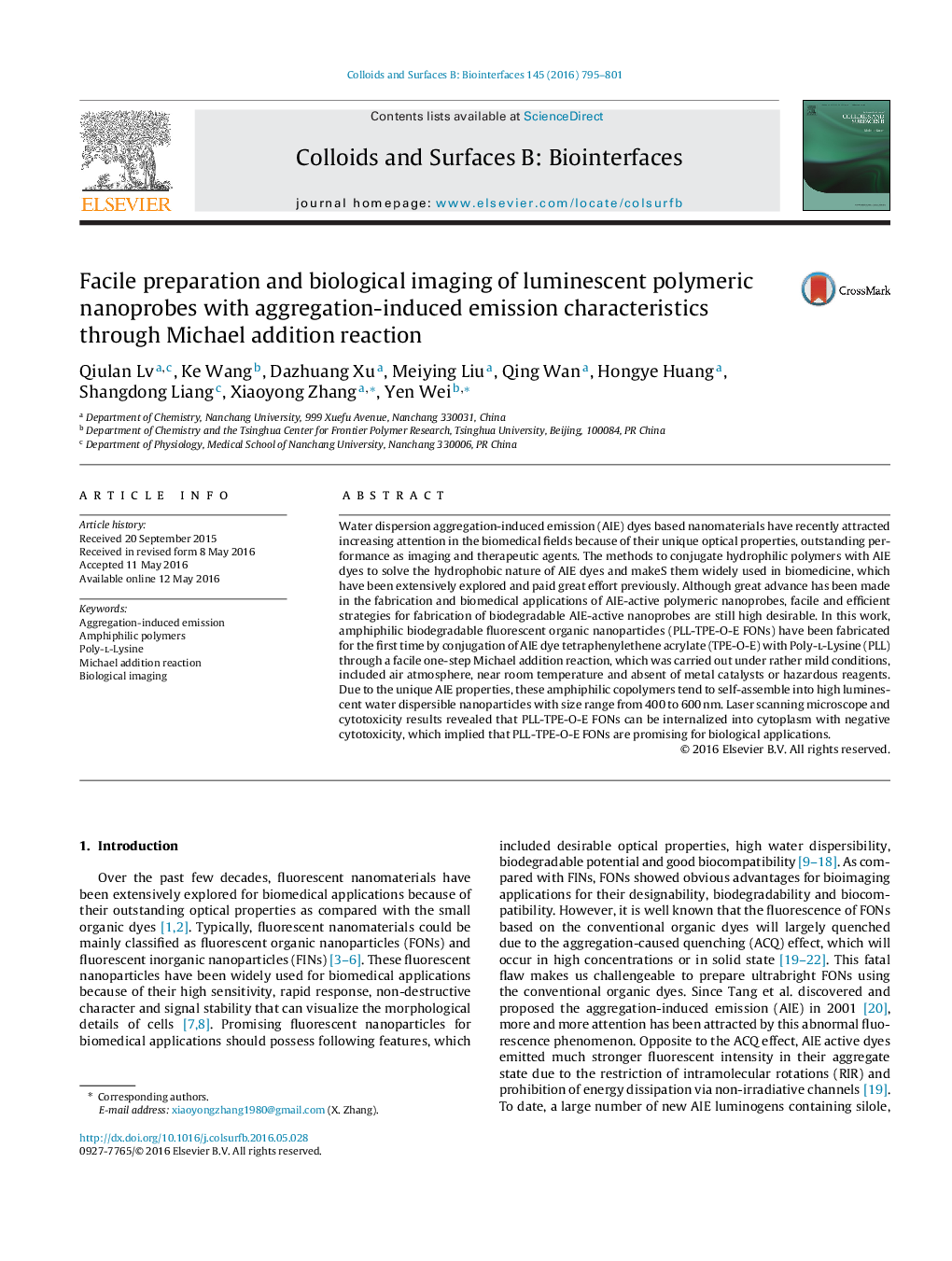| Article ID | Journal | Published Year | Pages | File Type |
|---|---|---|---|---|
| 599006 | Colloids and Surfaces B: Biointerfaces | 2016 | 7 Pages |
•Synthesis of AIE-active nanoprobes through Michael addition reaction.•The reaction can occur under air atmosphere, low temperature and absent of metal catalysts.•These AIE dye based nanoprobes are water dispersible, biocompatible with strong fluroescence.•These AIE-active nanoprobes are promising for biomedical applications.
Water dispersion aggregation-induced emission (AIE) dyes based nanomaterials have recently attracted increasing attention in the biomedical fields because of their unique optical properties, outstanding performance as imaging and therapeutic agents. The methods to conjugate hydrophilic polymers with AIE dyes to solve the hydrophobic nature of AIE dyes and makeS them widely used in biomedicine, which have been extensively explored and paid great effort previously. Although great advance has been made in the fabrication and biomedical applications of AIE-active polymeric nanoprobes, facile and efficient strategies for fabrication of biodegradable AIE-active nanoprobes are still high desirable. In this work, amphiphilic biodegradable fluorescent organic nanoparticles (PLL-TPE-O-E FONs) have been fabricated for the first time by conjugation of AIE dye tetraphenylethene acrylate (TPE-O-E) with Poly-l-Lysine (PLL) through a facile one-step Michael addition reaction, which was carried out under rather mild conditions, included air atmosphere, near room temperature and absent of metal catalysts or hazardous reagents. Due to the unique AIE properties, these amphiphilic copolymers tend to self-assemble into high luminescent water dispersible nanoparticles with size range from 400 to 600 nm. Laser scanning microscope and cytotoxicity results revealed that PLL-TPE-O-E FONs can be internalized into cytoplasm with negative cytotoxicity, which implied that PLL-TPE-O-E FONs are promising for biological applications.
Graphical abstractHigh luminescent fluorescent organic nanoprobes based on AIE-active dye have been fabricated through a facile Michael addition reaction and examined for biological imaging applicationFigure optionsDownload full-size imageDownload as PowerPoint slide
